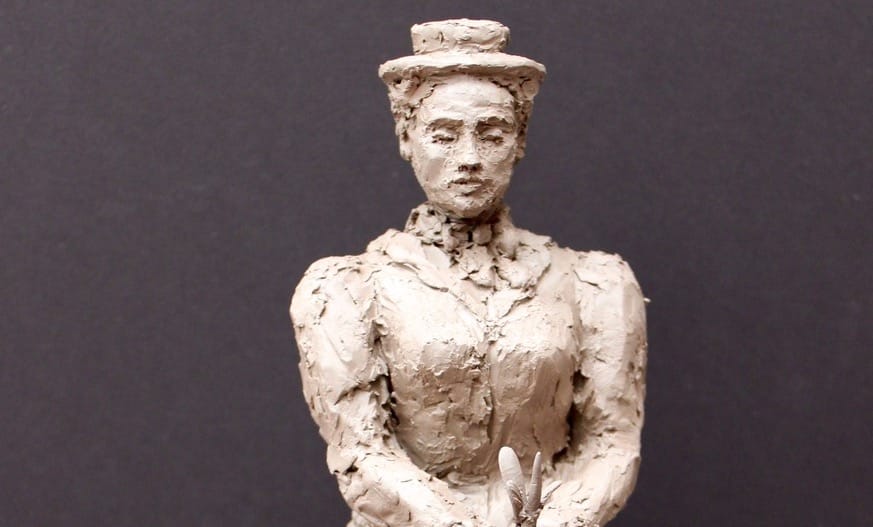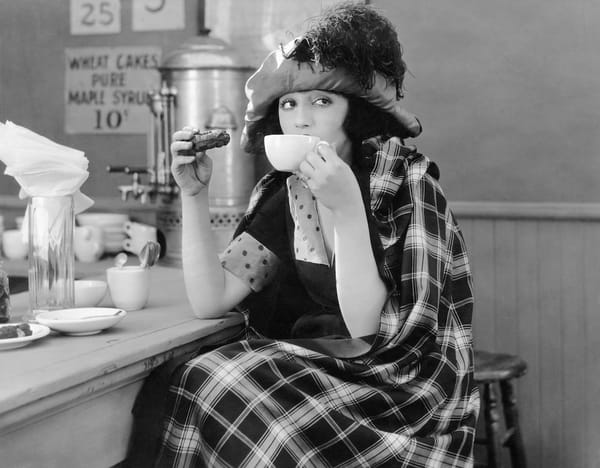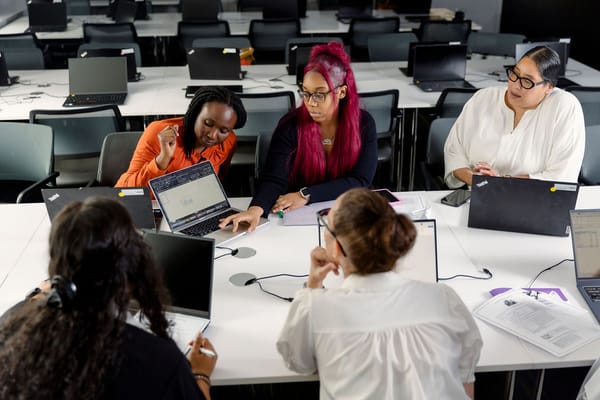‘The Chaotic, the Creative, the Instinctive, the Structured, the Mathematical’
An immersive project at Canterbury Cathedral marks the 1969 moon landing—and the women from a Navajo reservation in New Mexico who made that landing possible.
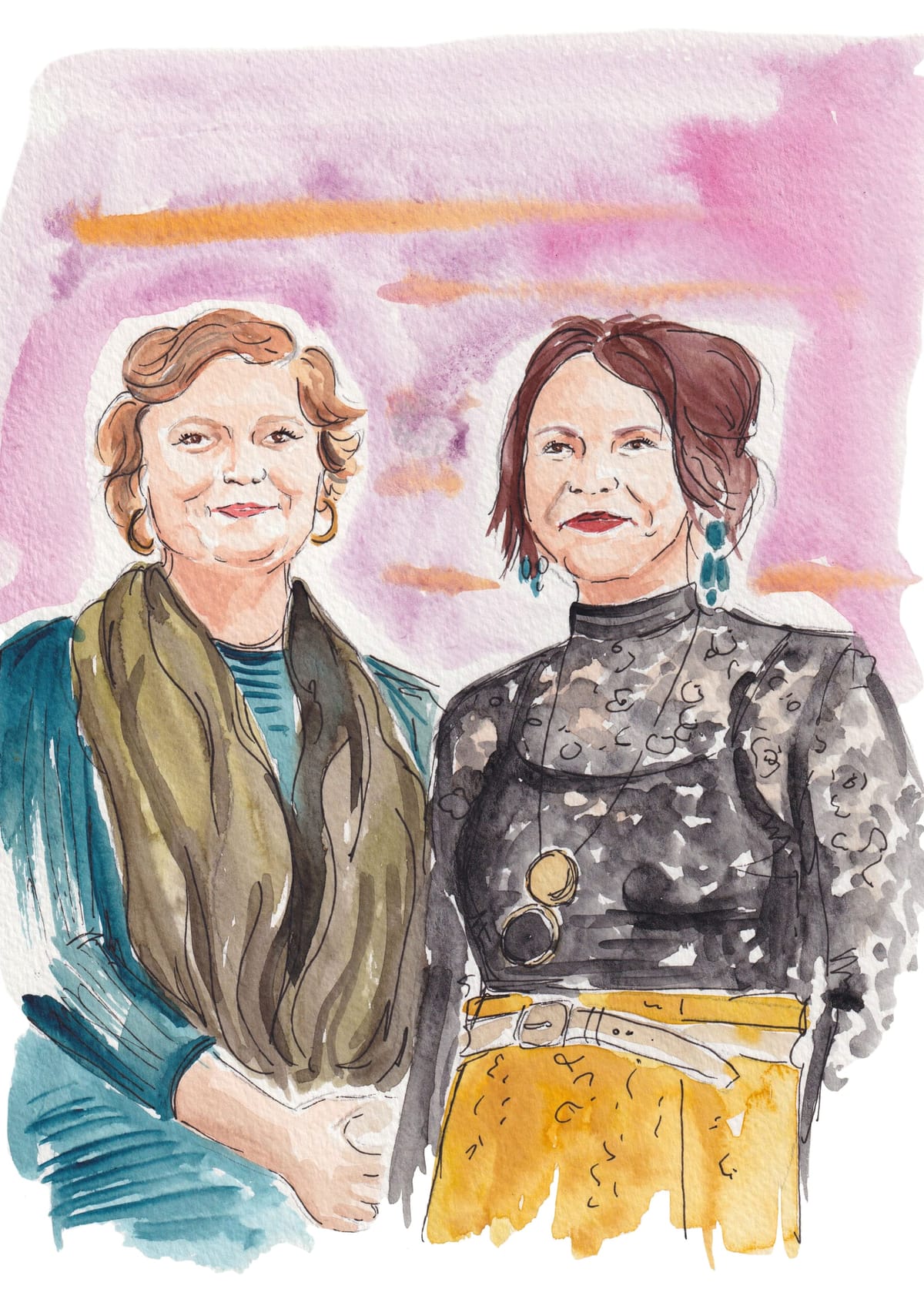
If you find yourself about 60 miles southeast of London this summer and you just happen to wander into the cool embrace of the Canterbury Cathedral, count yourself lucky. As you enter, you may be greeted by the swell of swings; then spot a 16 meter (52 foot) handwoven textile suspended from the cathedral’s vaulted ceiling; a burst of color and pattern. The textile is a response to a piece of music inspired by the 1969 moon landing and the women from a Navajo reservation in New Mexico who made that landing possible.
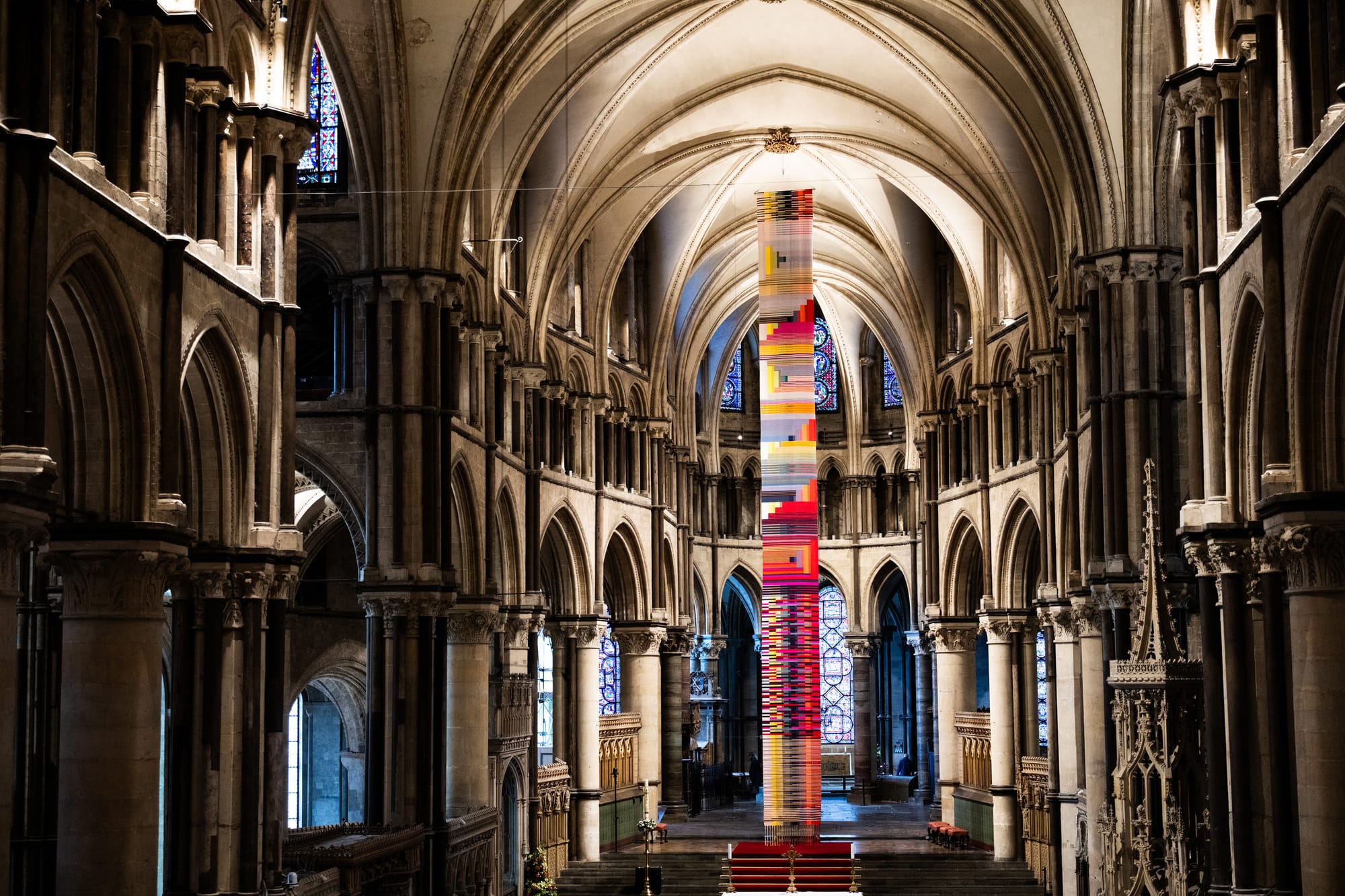
Get all that? I’m sure you did. But to better understand how all the pieces of the puzzle fit together, we must go back to before humans set foot on the moon. And that’s where this part of this particular story begins.
In 1965, Fairchild Semiconductor, one of the first manufacturers of computer chips, opened a production plant on a Navajo reservation in Shiprock, New Mexico—and hired 1,000 local Navajo women, who also happened to be expert rug weavers, as workers.
A brochure issued by the company at the time gives an indication of the company’s rationale—and no, it wasn’t DEI.
Alongside photos of women weaving rugs and peering into microscopes, the copy reads:
“A Navajo woman weaves a perfectly patterned rug without ever seeing the whole design until the rug is completed….Building electronic devices, transistors and integrated circuits also requires this same personal commitment to perfection.”
“And so,” the brochure continues, “it was very natural that when Fairchild Semiconductor needed to expand its operations, its managers looked at an area of highly skilled people living in and around Shiprock, New Mexico.”
The work of making chips, a mission-critical component in the Apollo 11 spacecraft, was “performed using a microscope and required painstaking attention to detail, excellent eyesight, high standards of quality, and intense focus,” noted the scholar, Lisa Nakamura, who also points out how women of color were often exploited by technology industries at the time, then relegated to the footnotes of history.
Today, music by the composer Helen Caddick, called “Moon Landing,” a piece in six sections played by a sextet–commemorates these women and their little-known contribution to the space age. The accompanying textile, by the artist Margo Selby, was woven in response to the music. The piece is described as a celebration of the intersection between mathematical patterns, tone and rhythm found in both weaving, music and chip-making.
Last week, I visited Selby’s studio, a space filled with looms and her signature, brightly-colored textiles, to meet with Selby and Caddick. I wanted to find out how the lives of a group of women whose stories unfolded decades ago on another continent inspired Selby and Caddick to create this installation.
Our conversation has been edited for length and clarity.
Moon Landing is inspired by the story of the Navajo women of Shiprock, New Mexico—which is a long way from the North Kent Coast, where you both live and work. How did all these pieces—the work, the inspiration—come together?
MS: I've always wanted to collaborate with a composer because I think of weaving as musical. And when I first met Helen, we started to look at the overlaps between weaving and music. One of the things that stood out was that both are very mathematical.
Weaving has lots of links to science. It was the Jacquard loom that inspired Charles Babbage to design his Analytical Engine.
[Editor’s notes: The Analytical Engine was essentially a model for the first computer, and written about by Ada Lovelace, although it was never built. Separately, the Jacquard loom was patented in 1804 by the Frenchman Joseph-Marie Jacquard, who developed a system of punch cards which corresponded to textile patterns. In the loom, the binary punch cards would lift and lower the shafts to weave the cloth; that was translated by Babbage into a binary system that became the basis for his idea of analytical engines.]
Helen took that as a starting point and then found out about the Navajo weavers who were employed because of their very dexterous skills, and also they were cheap labor. They were never properly acknowledged for their contribution to science.
HC: A lot of my work has been inspired by women's stories, and this story really grabbed my attention. I thought it was important to celebrate these women and what they'd achieved. I was wound up by the fact that they were known as “rope mothers”—it's so condescending to not give proper credit to the important work they were doing.
How much did the textiles created by the Navajo weavers inspire the piece?
MS: I didn't want to look too closely at their work, because obviously, there is a lot of talk about cultural appropriation. But when I think about the process of weaving, it's something that different cultures and different people have done all around the world.
And this is definitely the high point of everything I've done. To have this extra musical layer alongside the textile enriches and deepens my work, and makes it so much more intentional.
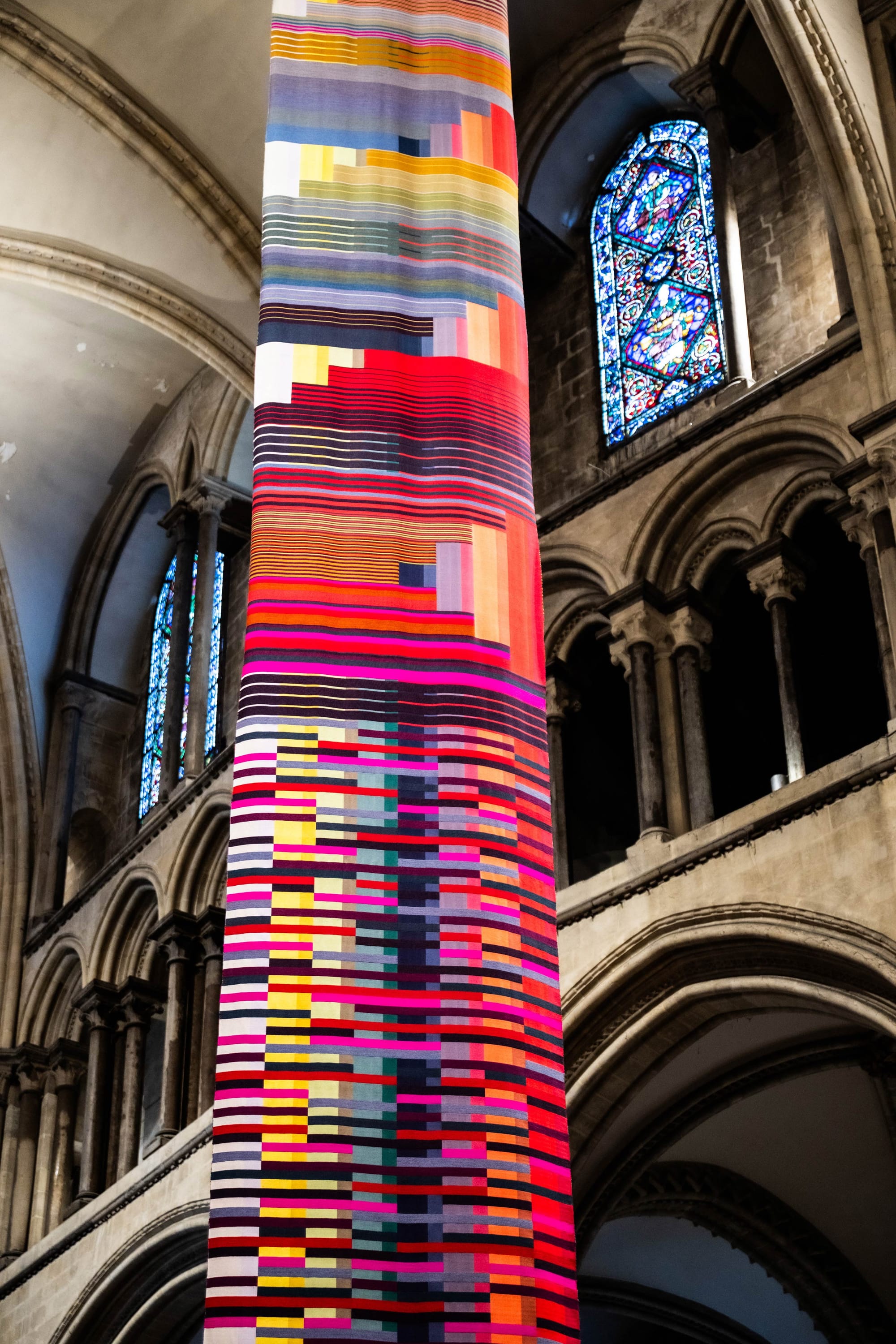
HC: There are endless parallels between music and textiles—the textures, the colors. When I think of instruments, I always associate them with certain colors—like for me, strings would be yellow, brass would be red.
When I saw Margo's work for the first time, I could hear music. In writing “Moon Landing,” I was imagining that all these bubbling textures were engineering the different coding changes that would enable the next stage of the journey to the moon. I was imagining Margo sitting at the loom, embodying all these women and weaving the codes.
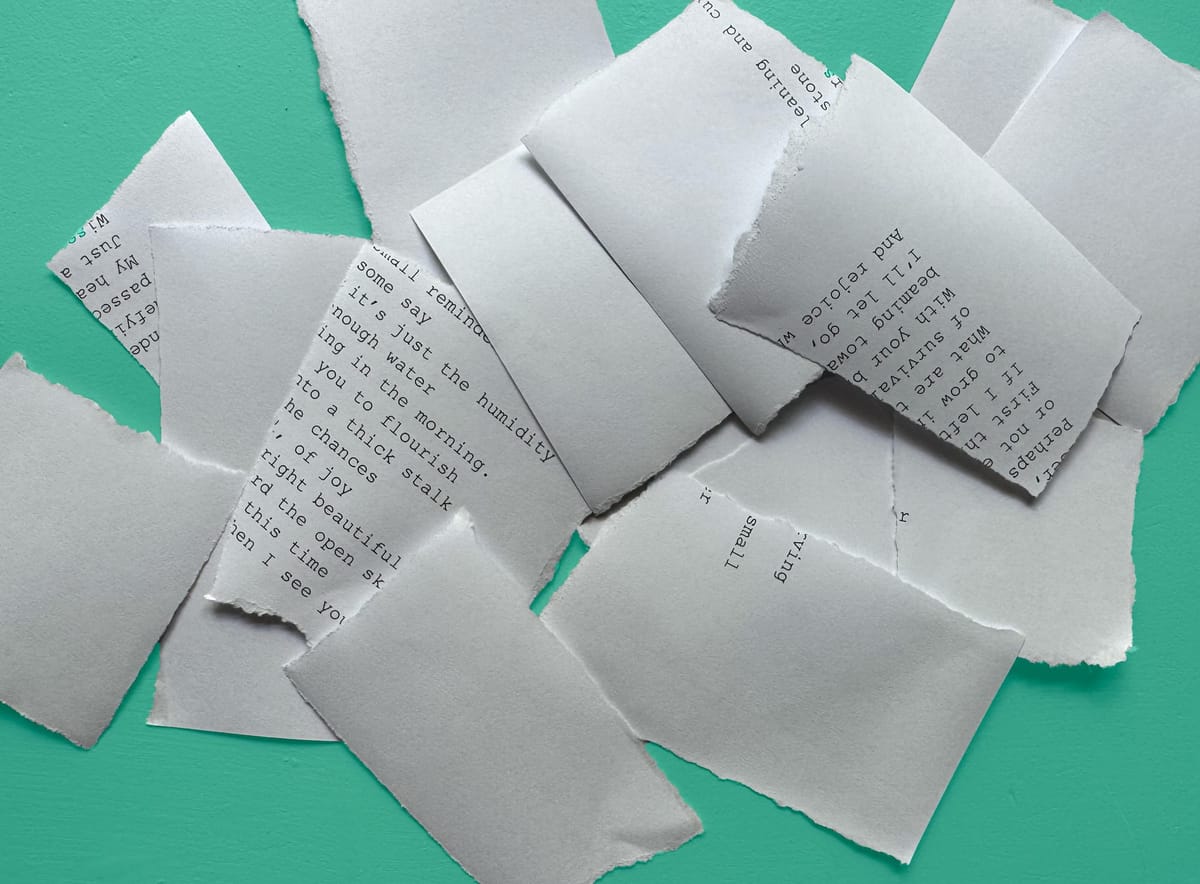
Margo, you have a very successful commercial operation, with textile lines in the British department store John Lewis, and a recent collaboration with Habitat, a British interiors retailer, and West Elm. How do you balance the commercial demands of what you do with the purely creative side?
MS: There's this tension in everything that I do, which is between the chaotic, creative and instinctive, and the structured and mathematical and organized. Those two things fight: the chaos versus the structure. I'm always striving for structure, but my heart and my creativity is quite chaotic.
But I've always enjoyed the business side of things. I do budgeting and forecasting, and I love marketing and selling—I love talking to people and dealing with people. I feel so grateful for that, because so many artists really do struggle with that side of the work.
I've found that the two sides of what I do complement each other: The commercial stuff supports me and gives me security so I can be completely creative and do pieces like this with Helen, which took me six months to make with absolutely no income from it whatsoever. And then that gives back to my business. It enriches my business; it gives my business so much more depth.
I think sometimes good things happen at that point of tension.
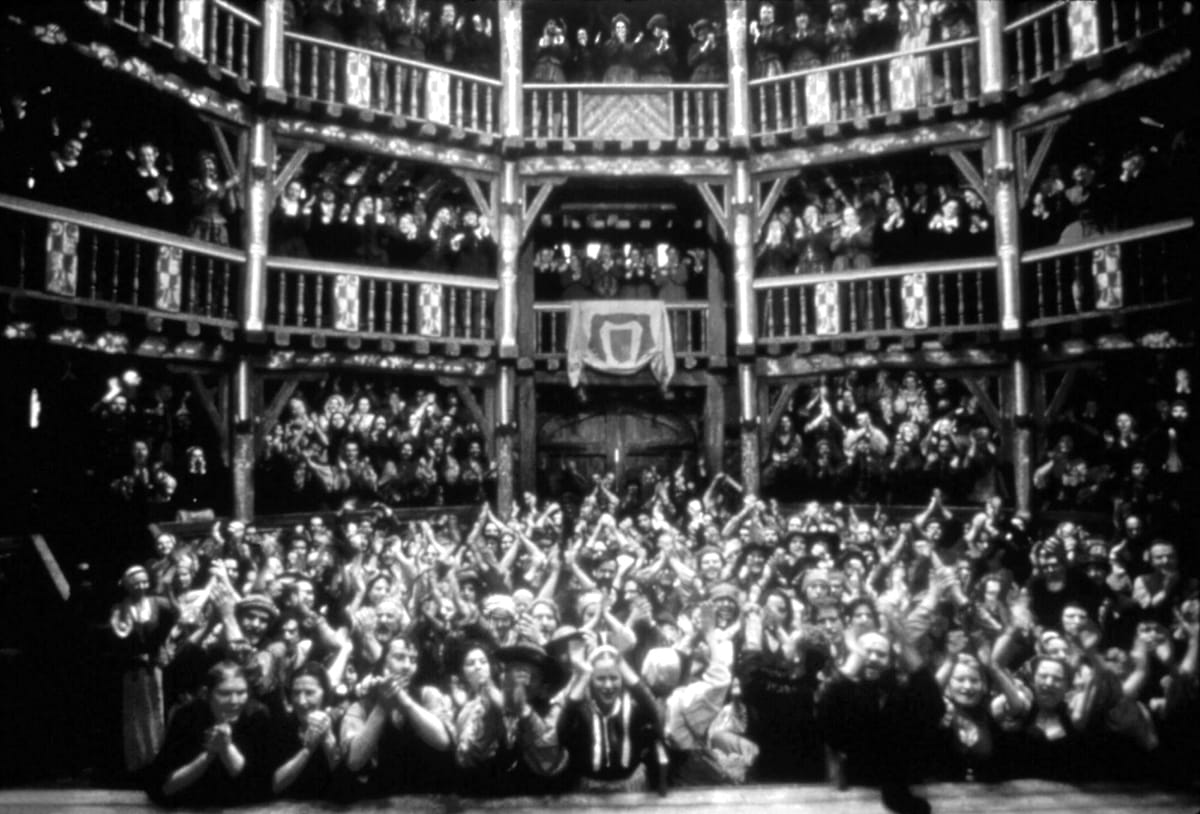
Margo and Helen, do you find yourselves inspired by the geography of Whitstable, where we all three live, or trying to reflect it in your work?
HC: I love living by the sea, because the speed of the waves is slower than your heartbeat, so you naturally relax. Being by the sea is nurturing, inspiring and beautiful.
MS: When I first came to Whitstable, I had a baby and I had a shop in London, and I was living an hour's commute from my shop, and it was all really hectic.
I moved to Whitstable with the absolute intention for everything to get smaller—I wanted a quieter lifestyle. When I moved here, I had one member of staff, and I was weaving very simple textiles, in minimal, pale yellows and pale creams.
But the more I wove, the more I found people gravitated to the business. And the busier things got, the more the colors came back and the noise came back. But I'm embracing it now. I’ve come full circle back to the tension between calm and chaos.
